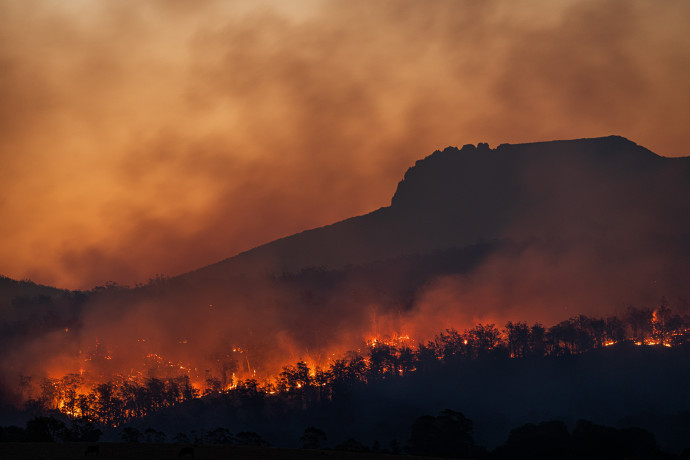Aim high, go fast: Why emissions need to plummet this decade

In this section for submissions by our Fellows, Dr Kevin Trenberth Hon FRSNZ and Professor Christopher Field discuss the urgent need to reduce global emissions and take action against the climate crisis. They turn their attention to Australia, a nation of currently high emissions but rich renewable energy resources, which could become a leader in the fight against global warming.
As climate scientists, we have observed with mounting concern the continuing emissions and the rise in atmospheric concentrations of carbon dioxide and other greenhouse gases. For decades, we have issued dire warnings about what is at stake and what is required to curb global warming. Yet global temperatures continue to rise, along with damage from extreme weather.
Encouraging global shifts are underway, including the uptake of renewable energy and recent climate commitments from the US, the EU, the UK, and others. This is the beginning of the global action that is required, but it is far from the scale and pace needed to avert far more severe, long-lasting and irreversible changes. Moreover, commitments to reduce net emissions to zero (net zero) must be matched by appropriate actions.
Multiple lines of evidence show that limiting global warming to 1.5°C above the preindustrial level, without significant overshoot and subsequent drawdown, is now out of reach due to past inaction. The science is telling us that global average temperature rise will likely exceed 1.5°C during the 2030s, and that long-term stabilisation at warming at or below 1.5°C will be extremely challenging. Should temperatures spike above 1.5°C for a significant period of time, the ecosystems on which we depend will be even more severely damaged. Climate-related damages will be widespread and could, in some settings, be an existential threat.
As temperatures rise, so too do the consequences. Australia and many other regions have suffered losses, but there is still so much to be protected and saved. Warming avoided can be measured in lives, species and ecosystems saved. This is why it is vital to strive towards achieving the long-term goals of the Paris Agreement.
Getting global emissions down to net zero as quickly as possible is the top priority. Given continuing emissions and the pace at which temperatures are rising, the science shows that globally, to keep temperature rise to well below 2°C without overshooting to higher values, emissions need to be halved by 2030, and there is a need to get to net zero by 2040 at the latest.
The report “Aim High, Go Fast” is the Climate Council’s science-backed vision for what Australia’s best effort could look like. Australia is a nation of currently high emissions but rich renewable energy resources. The country has been ravaged by unprecedented bushfires, droughts, and floods in recent years, and decision makers should not ignore these warnings.
To be sure, the task before us is massive, and the scale and pace of change required will need all-of-society shifts in the way we live, work, and power our economies. There may be some speed-bumps along the way as we develop and adopt solutions, but the right mix of good policy, courage, rapidly emerging new technologies and collaboration can smooth the way.
We as a global community must rise to this challenge, because the deadly consequences of global warming affect every single one of us. Bold, urgent action is the only way to save the people, places, and communities we love.
Australia, as an advanced economy and major emitter, and one with unrivalled potential for renewable energy and other climate solutions, should be a leader not a laggard, and reduce its emissions even faster than the required global average. Every country, perhaps encouraged by Australia, must do its very best to help meet the goals as outlined. Every tonne of emissions avoided matters, and every delay has an escalating cost.
